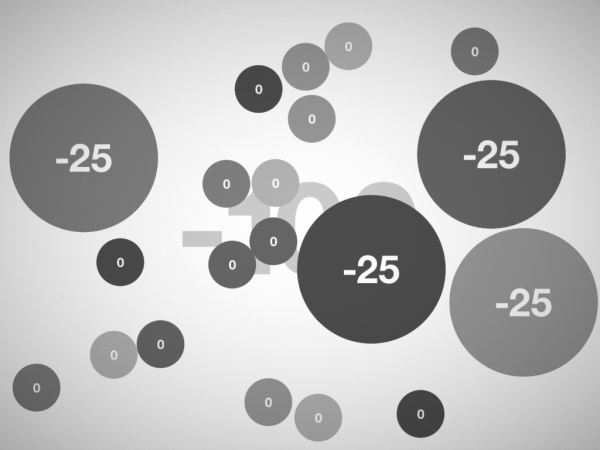App Store Insiders: Adam Saltsman, Semi Secret Software
One of the App Store's most creative minds discusses the impact of his games, his thoughts on current business models, and the future of the App Store.

 Adam Saltsman is one of the most talented, intelligent, and opinionated developers working on the App Store nowadays. He’s worked on a selection of titles on the App Store as diverse as the influential endless runner Canabalt to the abstract touchscreen game Hundreds. However, there are reasons why he thinks Canabalt isn’t quite as influential as it appears to be, and his concerns about the future of the App Stores and the indies working on it.
Adam Saltsman is one of the most talented, intelligent, and opinionated developers working on the App Store nowadays. He’s worked on a selection of titles on the App Store as diverse as the influential endless runner Canabalt to the abstract touchscreen game Hundreds. However, there are reasons why he thinks Canabalt isn’t quite as influential as it appears to be, and his concerns about the future of the App Stores and the indies working on it.

It’s important to remember that lots of games influenced Canabalt too, though, as well as Wurdle. These were not things created in a vacuum! All the same I could not be happier with Canabalt’s reception and impact. It feels like a huge honor, all the time, forever.
148Apps: The way that developers make money within the App Store has definitely shifted in the past 5 years, yet you have remained an outspoken critic of the way that many games use in-app purchases. Why is that? Has your position shifted at all over the last few years? Saltsman: I don’t think my position has changed much. Most of the approaches to IAP or “free to play” style designs that are deployed on the App Store, especially in financially successful games, remain fairly corrupt or coercive in a way that makes me pretty uncomfortable. Some of these approaches have actually been outlawed in Japan, so I don’t think their coercive nature is completely imaginary. These approaches have even become formalized enough to have actual names (treadmills, energy systems, tight loops, etc).I think players in general are at least slightly more aware of these systems. This is important, especially for kids. Many of these games still target children with schemes like “give us $5 or your virtual fish will DIE.” It’s good for people to understand that a “game” on their phone might operate that way.
But also there have been games with large IAP components that don’t really feel particularly coercive, like ShellRazer, which I think is cool. These games actually speak to the promise of IAP and F2P as a way of engaging a broader or different type of audience in different ways. These games are very definitely the exception to the rule, though.
148Apps: What do you think about the viability of the App Store over the next five years? Will there be any changes, or any directions that you would like to see the marketplace go in? Saltsman: The App Store to me seems to really strongly favor a particular kind of approach (if you don’t do IAP of course), which we used on Hundreds. This approach goes something like this: “work on the game in relative secrecy for like 1–2 years, then launch it and hope it gets featured and impresses everybody enough to get the critical mass you need to get good word of mouth and a good long tail in the future.”As a member of a small team, and somebody with a growing family, this approach freaks me out pretty bad, and there are a lot of platforms (especially PC/Mac) where you don’t have to take that kind of crazy all-or-nothing path. I would love it if the App Store could support preorders, and bundles, and a lot of these other things that help sustain small teams through risky development on other platforms.
On top of that, launching on the App Store first places certain price limits on your work in some people’s minds, and selling at a higher price point on other platforms later can be a challenge. For small teams, it seems like designing for PC/Mac first, with potentially touch-screen friendly controls in mind (e.g. favoring the mouse over gamepads), is a really superior way to approach things, from a business and tech perspective.
In the “old days” (ha ha!) it felt like you could just think up a real good game for the only model of iPhone/iPod Touch that actually existed, build it in a reasonable period of time, and kind of blow people’s minds. Prices weren’t quite as low back then either. It’s totally natural and understandable that those early successes would draw in more competition, but at this point, as a small team of 2 or 3, you have to be pretty receptive to the idea that you are up against teams of 10 or 12, with 1–2 years of publisher-backed runway. You can still compete, indies can ALWAYS compete…but if you are trying to make games commercially and take care of your family, you have to be cognizant of these things, and more considered in your approach in the future.
Thanks to Adam Saltsman for his time; it's always a pleasure.
